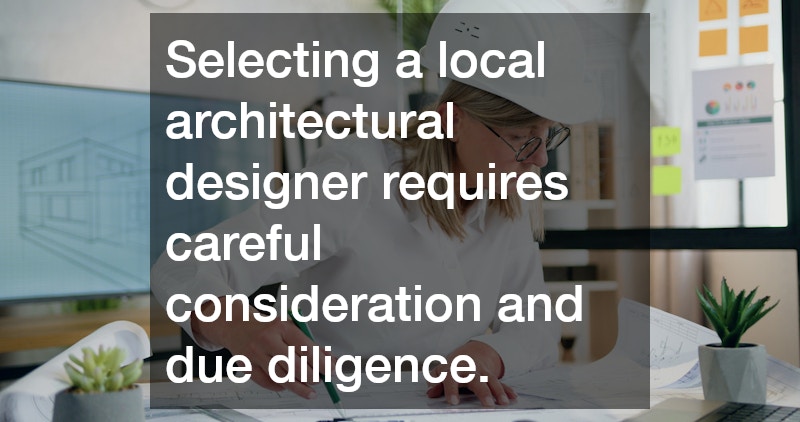Finding the right architectural designer for your project is crucial to ensuring a successful outcome. There are many factors to consider during the selection process. This article will discuss some of the most common questions and considerations people have when seeking local architectural designers.
How to Find Reputable Local Architectural Designers?
Research and Recommendations
One of the first steps to finding a reputable architectural designer is through extensive online research. Visiting websites like the American Institute of Architects can provide a list of certified professionals in your area.
In addition to online research, personal recommendations can be invaluable. Friends and family can offer insights based on their experiences with local architects. Another effective way is attending local architecture events or open houses. Networking at these events can lead you to designers who are respected in your community.
Checking Credentials and Experience
It is essential to verify the credentials of any architectural designer you consider hiring. Ensure they hold the necessary licensing and certifications required for the practice in your state. Experience is another critical factor. Reviewing the past projects of potential candidates can provide insight into their expertise and style. Don’t hesitate to ask potential designers about their work history directly. Their willingness to share their experiences can indicate their transparency and eagerness to work with you.
What to Expect During the Consultation Process?
Initial Meetings and Communication
Initial consultations are a pivotal moment in the designer-client relationship. These meetings often involve discussing your goals and showcasing the designer’s capabilities. Clear communication is crucial in these early stages. Misunderstandings can lead to significant hurdles later in the project. Use this opportunity to evaluate the designer’s attentiveness and understanding of your needs. A designer’s ability to listen and respond effectively is essential for a successful collaboration.
Defining Project Scope and Budget
Setting a clear project scope is a critical step that defines the outline of work involved. It involves agreeing on the project’s objectives and deliverables with the designer. Discussing the budget is equally important during consultations. Establishing a realistic budget early on helps to manage expectations and avoid financial surprises. Transparent conversations about budget constraints allow designers to tailor their approach to fit your financial parameters. Flexibility in approach can still achieve a spectacular result within budget limitations.
How to Evaluate Architectural Design Proposals?
Understanding Design Concepts and Plans
Design concepts and plans are the blueprints of your future space. They need to align seamlessly with your vision and practical requirements. Understanding these documents takes time and focus. A designer should be able to explain their ideas in a way that makes sense to you and addresses your needs. Engaging with the designer to clarify any uncertainties about the plans can prevent costly adjustments later. It’s crucial to have a design that not only looks appealing but functions well too.
Comparing Multiple Proposals
Reviewing several proposals allows you to gauge your options and find the best fit for your needs. Different designers bring different styles and strengths to the table. Comparing these proposals involves checking consistency with your goals and challenges presented by each design. Evaluating the detail and innovation in each proposal can guide your decision. You should also take into account the costs and timelines associated with each proposal. Understanding these variables helps ensure your choice is practical and aligned with your objectives.
What Should Be Included in a Contract with an Architectural Designer?
Key Contract Elements
A well-drafted contract is the cornerstone of a successful designer-client relationship and should include clear terms. Key elements should cover scope, timelines, fees, and deliverables. Specifics such as materials, methods of communication, and approval processes for changes are also essential. A comprehensive contract ensures widespread agreement on the project details. Having a clear contract minimizes conflict and provides a framework for resolving any disagreements. It protects both parties by documenting their responsibilities and expectations.
Negotiating Terms and Conditions
Good negotiation is about finding a balance that serves both the client and the designer while maintaining a collaborative spirit. Discussing terms openly can reveal any potential issues before they become problems. Ensure that you are satisfied with the payment schedule, as it impacts the project’s financial structure. Look for milestones in the contract that correlate with payments. Additionally, consider including clauses for confidentiality and dispute resolution. Proactive inclusion of these terms safeguards interests and encourages a mutually respectful partnership.
Selecting a local architectural designer requires careful consideration and due diligence. By understanding the key questions and factors involved, you can choose a designer that meets your needs and ensures a successful project outcome.

